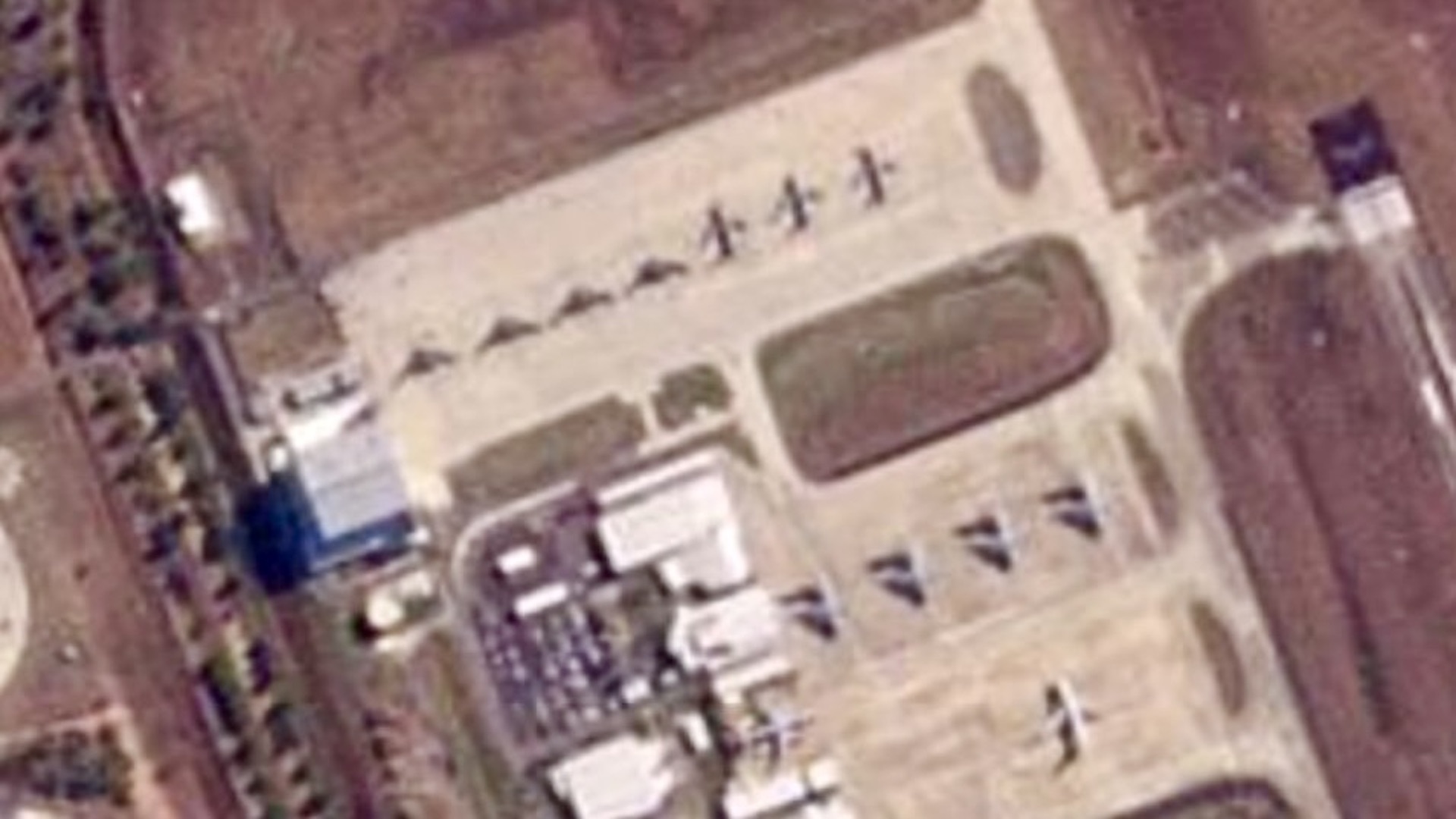Recent imagery obtained by The War Zone from Planet Labs shows four USAF B-2 Spirit stealth bombers lined up at the Royal Australian Air Force (RAAF) Amberley airbase in Queensland. Considering the USAF currently only operates 20 B-2 bombers, the photo provides an unprecedented glimpse from space of one-fifth of the service’s entire B-2 fleet deployed ‘down under.’ That being said, it will likely become a very normal sight as the U.S. and Australia work more closely to deter China.
The photo highlights the growing presence of USAF B-2s in Australia in recent months – signaling the service’s commitment to maintaining stability within the Indo-Pacific amid growing tensions with China. The four B-2s currently stationed at Amberley were sent from the 509th Bomb Wing at Whiteman Air Force Base, Missouri, to support a Pacific Air Forces Bomber Task Force. Two B-2s arrived at Amberley on July 10, while another two B-2s arrived on July 12. While B-2s have visited Australia before, this is the first deployment of B-2s to the country as part of the Bomber Task Force (BTF), according to Janes. USAF and RAAF flyers have focused on “training missions and strategic deterrence missions” since the four USAF B-2s arrived at Amberley as part of the Enhanced Cooperation Initiative under the Force Posture Agreement between the U.S. and Australia.
The first pair of B-2s to arrive at Amberley will remain there “throughout the months of July and August and are planning to be involved in various Australian Defence Force (ADF) exercises such as Exercise ‘Koolendong’ and Exercise ‘Arnhem Thunder,’” an Australian Department of Defense spokesperson said. Exercise Koolendong 2022 wrapped up at the end of July.


Performing training missions with USAF B-2s and allied fighter jets has been an “absolute blast [so far,]” Lt. Col. Andrew Kousgaard, commander of the 393rd Expeditionary Bomb Squadron, said in a statement after USAF flyers began training with their RAAF counterparts. “Since our advanced team hit the ground … U.S. airmen have integrated with their Australian counterparts in every specialty: fuels, logistics, maintenance, aviators, you name it.”
USAF and RAAF flyers also intend to experiment with refueling B-2s from RAAF KC-30 tankers, Kousgaard indicated, which would add another means of refueling USAF bombers in the Pacific during coalition operations.
“We have plans to conduct engines-running refueling with Australian equipment, [and] air refuel with Australian KC-30s … the list goes on, and the entire deployed squadron is really excited about it,” Kousgaard said. “It’s important for us to demonstrate that we can accomplish that mission from diverse locations in the largest combatant command in the world, and that’s exactly what we’re doing here.”
“The only way to learn and improve is to actually deploy and practice,” he noted. “We simply cannot operate effectively by ourselves in this environment, and learning to effectively integrate with our partners is absolutely critical to success. We’re training against that ‘tyranny of distance,’ alongside our Australian partners on this deployment, and that experience is truly invaluable.”
Commenting on the deployment of the first pair of B-2s sent to Amberley, Kousgaard said: “This deployment of the B-2 to Australia demonstrates and enhances the readiness and lethality of our long-range penetrating strike force.”
The presence of so many B-2s in Australia clearly sends a very public signal that the U.S. is prepared to use the B-2 should a future conflict with China unfold.
The deployment also highlights the commitment of the U.S. to supporting its allies in the Indo-Pacific – particularly Australia. The U.S., Australia, and the U.K. formed a trilateral security pact in September 2021 covering the Indo-Pacific region (AUKUS,) which aids the transfer of weapons and technologies between the three countries. As part of the pact, the U.S. and U.K. will also help Australia to build nuclear-powered submarines. In a further show of unity, U.S. Navy Adm. John C. Aquilino, commander of U.S. military forces in the Indo-Pacific, recently visited RAAF Base Amberley while in the country for the 24th annual Indo-Pacific Chiefs of Defense (CHODs) conference.
RAAF Air Cmdre. David Paddison underscored the significance of Aquilino’s visit to the base.
“It is a privilege having Admiral Aquilino visit our largest Air Force base in Australia and meeting our aviators, who have been working with their peers from the 509th Bomb Wing.”
“It’s not a regular occurrence for our refueling, security, and firefighters to gain experience on aircraft such as the B-2. This partnership has been instrumental in enhancing the capabilities and interoperability of both our forces through joint exercises and activities. The Indo-Pacific is our home and we stand committed to an open, inclusive, and resilient Indo-Pacific.”
In a recent public statement, Adm. Aquilino stressed that the Indo-Pacific is “the most consequential theater with the most challenging security issues [for the U.S.] … advancing our interoperability with critical allies like Australia is critical to maintaining a free and open Indo-Pacific.”
While several USAF B-2s are expected to stay at Amberley for at least another few weeks, it’s likely that the service’s presence in Australia will only increase, with U.S. bombers setting up shop ‘down under’ becoming a common occurrence.
Contact the author: oliver@thewarzone.com
